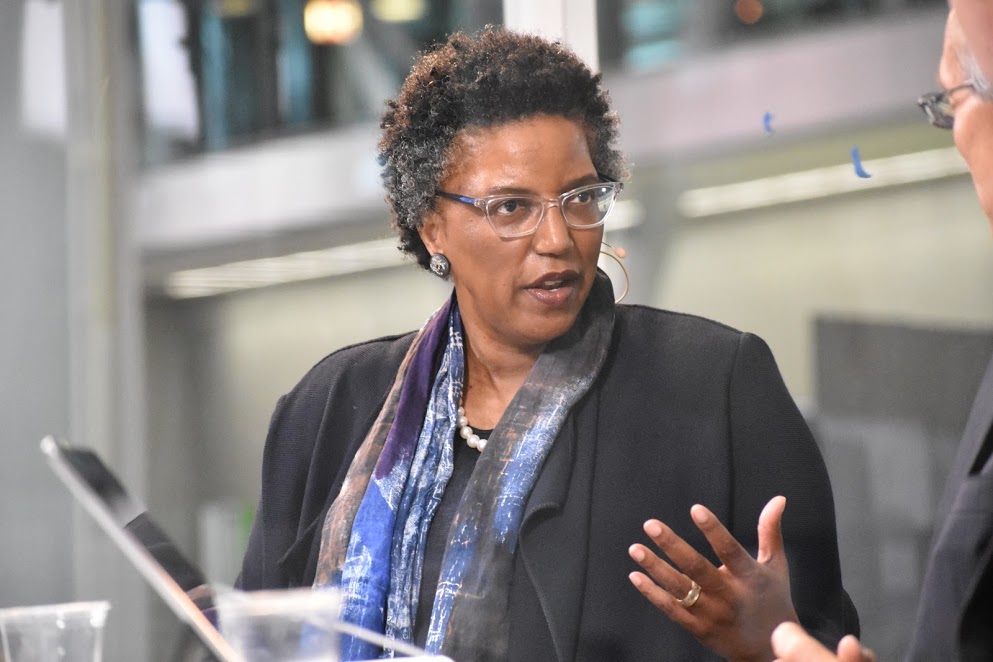 EMERGING TECH
EMERGING TECH
 EMERGING TECH
EMERGING TECH
 EMERGING TECH
EMERGING TECH
When a group of academic researchers conducted a 2017 study of how corporate boards enable innovation, they found that many directors were struggling with the concept. Reasons ranged from risk avoidance to a bias for short-term results.
“What we did find is many boards actually are seen as being inhibitors,” said Linda Hill (pictured), Wallace Brett Donham professor of business administration at the Harvard Business School. “They don’t help management make the right decision.”
Hill spoke with Dave Vellante (@dvellante) and Stu Miniman (@stu), co-hosts of theCUBE, SiliconANGLE Media’s mobile livestreaming studio, during the LiveWorx 18 event in Boston, Massachusetts. They discussed barriers to innovation, whether large enterprises can foster creative thinking, and what Apple’s Steve Jobs learned from Polaroid’s inventor. (* Disclosure below.)
Harvard’s board study offers insight into what continues to be an ongoing topic of discussion for corporate leaders. Executives who shy away from creating a culture that fosters a team-oriented approach and encourages debate will soon find themselves on the wrong end of the innovation spectrum, according to Hill.
“Most innovation is the result of a collaboration among people of a different expertise and different points of view,” Hill said. “In fact, unless you have that diversity and some conflict, you rarely see innovation.”
Can large companies innovate, or is this the domain of smaller, more agile enterprises? Hill’s research has found that large companies can be innovative, but it is not easy.
“What we see in organizations, big ones that can innovate, is they don’t separate out the innovators from the executers,” Hill said. “They tell everyone, ‘You need to be thinking about not only what you should be doing, but what you could be doing.’”
Being able to successfully innovate occasionally requires a willingness to go strongly against the grain of conventional thinking. This lesson was instrumental for Apple Inc.’s legendary co-founder Steve Jobs, who once visited Edwin Land, the investor of instant photography at Polaroid.
As Hill recalled the story, Land told Jobs that when his scientists got stuck on a problem, he would often invite arts and humanities students to visit his lab and offer advice. One day, a visiting student questioned why a person should have to wait for a photograph to be developed.
“Really innovative ideas are often ideas that look like they’re in conflict initially,” said Hill about Land’s approach to seek out non-technical students. “They will ask the stupid question because they don’t know it’s stupid.”
Watch the complete video interview below, and be sure to check out more of SiliconANGLE’s and theCUBE’s coverage of the LiveWorx 18 event. (* Disclosure: TheCUBE is a paid media partner for the LiveWorx event. Neither PTC Inc., the event sponsor, nor other sponsors have editorial control over content on theCUBE or SiliconANGLE.)
Support our mission to keep content open and free by engaging with theCUBE community. Join theCUBE’s Alumni Trust Network, where technology leaders connect, share intelligence and create opportunities.
Founded by tech visionaries John Furrier and Dave Vellante, SiliconANGLE Media has built a dynamic ecosystem of industry-leading digital media brands that reach 15+ million elite tech professionals. Our new proprietary theCUBE AI Video Cloud is breaking ground in audience interaction, leveraging theCUBEai.com neural network to help technology companies make data-driven decisions and stay at the forefront of industry conversations.